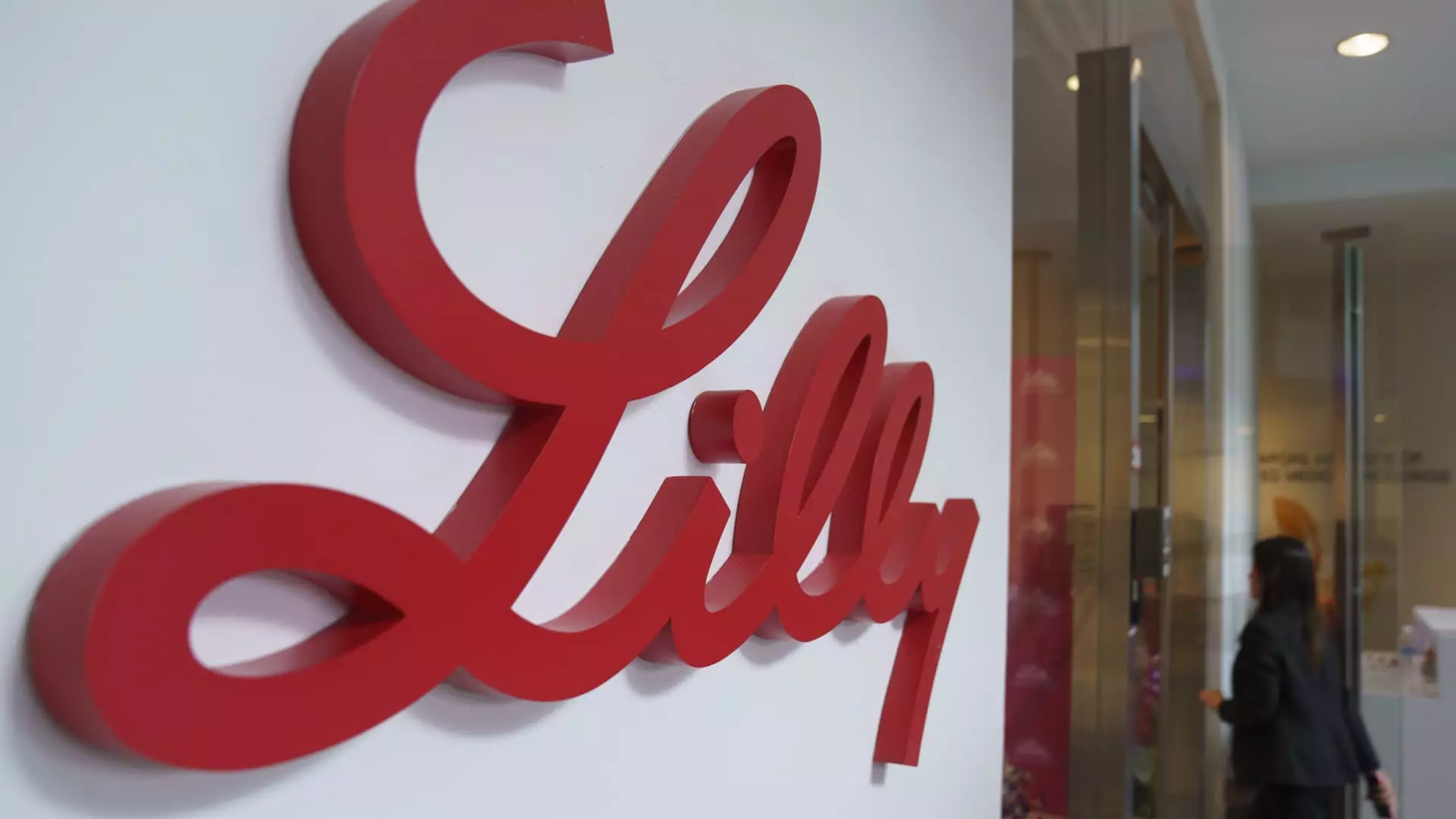Eli Lilly has defied the odds in the face of an uncertain market by reporting an impressive first-quarter revenue of $12.73 billion, marking a staggering 45% increase year-over-year. While it is easy to get caught up in the flashy numbers, the narrative behind this growth warrants a more critical examination. The pharmaceutical industry is no stranger to profit fluctuations, but Eli Lilly stands at a crossroads, largely influenced by external factors such as tariffs and economic policy debates. The impression given is that Lilly’s financial success is buoyed by soaring demand for its diabetes and weight loss treatments, like Mounjaro and Zepbound. These lucrative product lines have garnered a staggering 113% increase in revenue, yet the company’s future profitability appears less certain.
The Tariff Tango: A Double-Edged Sword
One of the most concerning developments in Eli Lilly’s financial outlook is the reduction of its full-year profit guidance, revised downward from $22.50 to a less optimistic range of $20.78 to $22.28 per share. This adjustment comes primarily from a $1.57 billion deal charge that arose from its acquisition of an oral cancer treatment. This highlights a growing trend within the pharmaceutical sector; while the demand for certain drugs may soar, the intricacies of mergers and acquisitions can turn what looks like a gold mine into a black hole of unforeseen costs. Moreover, Eli Lilly’s guidance still factors in existing tariffs proposed during the Trump administration, raising the question of whether these tariffs will significantly impact the price and availability of its products moving forward.
Despite CEO Dave Ricks’ assertions that the threat of tariffs is bolstering U.S. manufacturing, there is deep skepticism about the actual efficacy of such policies. Are tariffs truly bringing back vital supply chains, or are they merely stoking uncertainty among manufacturers and consumers alike? Ricks calls for permanent lower tax rates centered on domestic production—a sensible notion, yet how practical is it in an evolving global economic landscape? The reality is that the pharmaceutical industry thrives on profit maximization, and locating production facilities in “low-tax islands” is seen as a necessary maneuver. Thus, any claims made about returning to U.S. manufacturing must be viewed with a critical lens, questioning the genuine commitment to local labor when global profits loom large.
Unpacking the Ingredient Demand
The skyrocketing sales of Mounjaro and Zepbound uncover a deeper socio-economic issue in America—the alarming obesity epidemic and the rising incidence of diabetes. These medications have surfaced not just as health solutions but also as symbols of transformed healthcare paradigms, where pharmaceutical interventions dominate over lifestyle changes. Eli Lilly has seized upon this urgent need, generating massive revenues while responding to market demand.
However, one must lament a system that heavily relies on injectable drugs when fundamental changes—like improvements in diet and exercise—might yield longer-lasting benefits. The surge in prescriptions for these drugs raises ethical questions: are we simply treating the symptoms while neglecting the root causes of these chronic diseases? It is a double-edged sword; financial gains for Eli Lilly are undeniably advantageous for shareholders, but what are the long-term implications for public health?
Manufacturing Realities: Shortages and Solutions
Despite Eli Lilly’s robust sales figures, the company faces persistent supply challenges. Demand for Mounjaro and Zepbound has exceeded supply, forcing Eli Lilly and its competitors like Novo Nordisk to invest billions in increasing manufacturing capabilities. This investment is a desperate but necessary bid to meet soaring demand, underscoring the reality that financial health does not equate to operational success. In an era where health outcomes should be prioritized, the FDA’s renewed declaration of the end of a shortage signals hope but also prompts questions about raw material accessibility and the ability to scale production responsibly.
While Eli Lilly celebrates its current successes, the shadow of its costs looms large. As profits commit to rising production costs and market volatility driven by tariffs and healthcare policies dominate the political landscape, the question remains: can Eli Lilly leverage its momentary financial strength into a sustainable future amid potential inequities in drug access?

